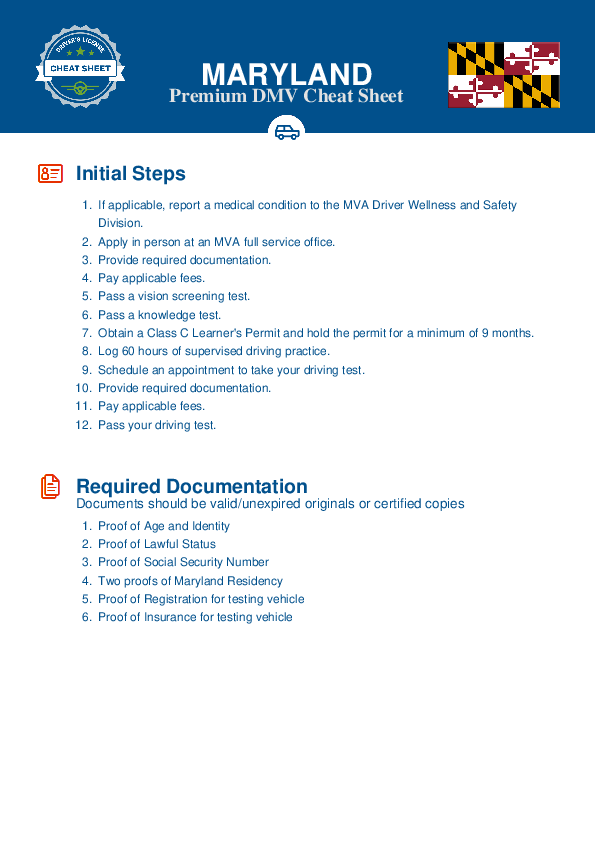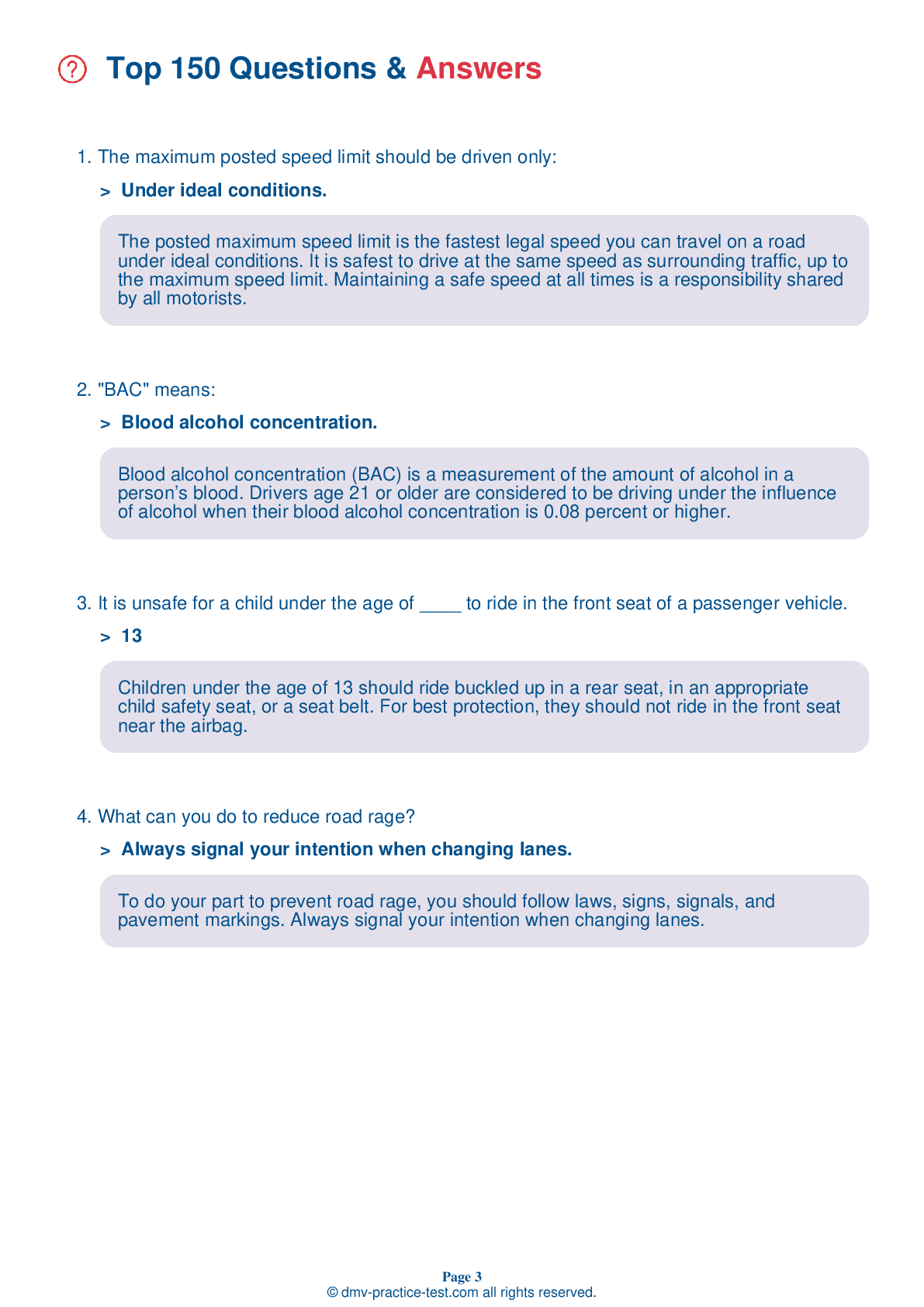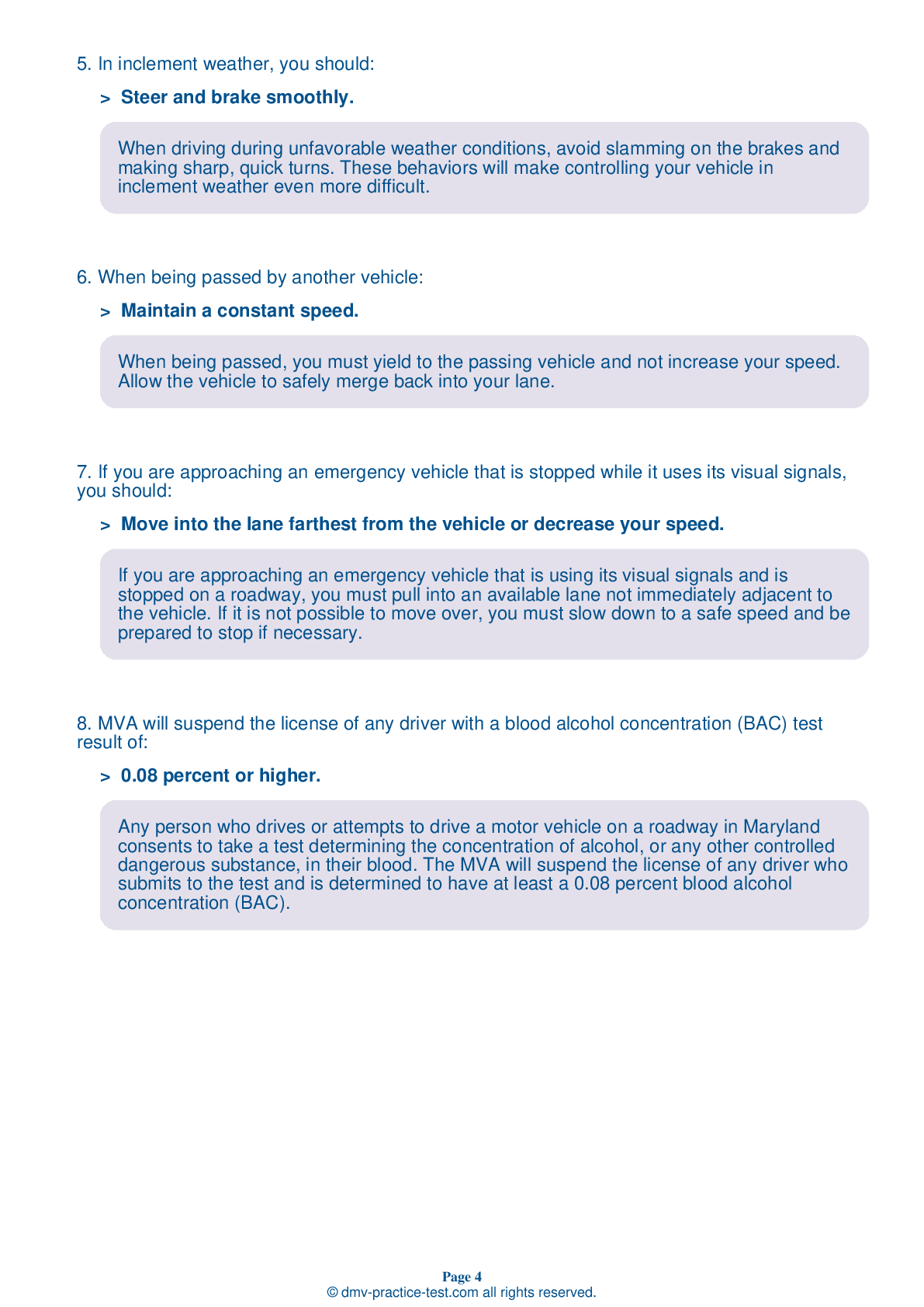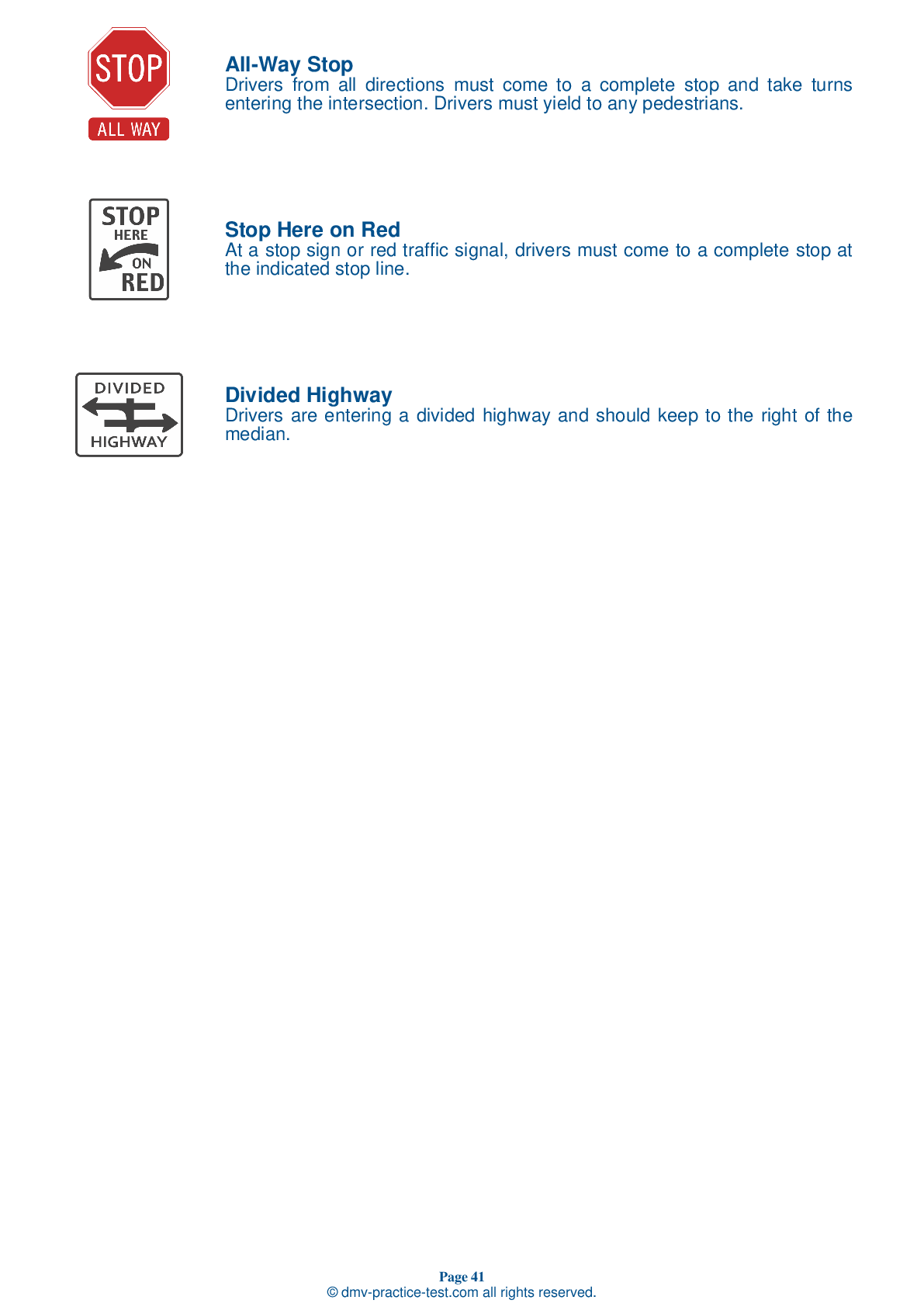FREE Maryland DMV Practice Test #23 Page 3 of 3
Maryland DMV practise examinations have been updated for January 2025. It includes questions based on the Maryland Driver Handbook's most essential traffic signals and regulations for 2025. Use actual questions that are very similar (often identical!) to the DMV driving permit test and driver's licence exam to study for the DMV driving permit test and driver's licence exam.
On the practise exam, each question gets a tip and explanation to help you remember the concepts. The written component of the official Maryland DMV test will include questions about traffic rules, traffic signs, and driving statutes, as well as knowledge from the Driver Handbook.
To obtain a passing grade, you must correctly answer 22 of the 25 questions. Take our DMV practise exam to help you prepare for your Maryland instruction permit or driver's licence.
The DMV exam is available in several languages.
Using any kind of testing assistance will result in an automatic fail, and the DMV may take additional action against your driver's licence, so stay away from it.
17 . It is unlawful to:
It is illegal to cross the centerline to pass when driving on hills, in curves, and in other locations where you cannot see ahead far enough to pass safely. You may not pass at street crossings, at railroad crossings, where signs indicate no passing zones, or where a solid yellow line is next to your lane. You may not pass when the vehicle in front of you has stopped for a pedestrian or when driving in work zones where passing would be hazardous.
18 . If you need to pass a bicycle being ridden on the road, on the shoulder, or in a bike lane, you should:
If you need to pass a bicycle being ridden on the road, on the shoulder, or in a bike lane, you should slow down and pass while putting at least three feet between your vehicle and the bicycle. Be especially cautious when passing a bicycle because a bicycle crash comes with an increased risk of injury or death.
19 . When driving in fog, you should:
Any time you experience lowered visibility while driving, such as in foggy or rainy conditions, you should decrease your speed and increase your following distance. Use your low beam headlights in fog and rain.
20 . If conditions require you to use your windshield wipers, you should:
If conditions require you to use your windshield wipers, Maryland law requires you to turn on your headlights. It is important to remember that you should never use your high beam headlights if you are driving in rain, snow, or fog.
21 . Collisions are more likely to happen when:
Collisions are more likely to happen when one driver moves faster or slower than the other vehicles on the road. Driving faster than other traffic increases your chance of being involved in a collision. Driving more slowly than other traffic is also dangerous because it can increase the risk of a rear-end collision with your vehicle or cause other drivers to swerve to avoid hitting you.
22 . Any amount of alcohol in the blood may affect a driver's:
A driver’s ability to safely operate a vehicle may be impaired at any BAC level, even a level lower than the legal limit. Any amount of alcohol can affect one’s judgment and physical coordination. Driving under the influence of even a small amount of alcohol can lead to criminal charges.
23 . After passing a vehicle, it is safe to return to your driving lane when:
Before you return to your driving lane, be sure you are not dangerously close to the vehicle you have just passed. One way to do this is to look for the vehicle in your inside rearview mirror. When you can see both headlights in your rearview mirror, you may have enough room to return to your driving lane.
24 . The best thing to do if you become tired while driving is to:
If you become tired while driving, it is best to stop to rest or change drivers. Being tired dulls your mind and slows down your reactions, making driving hazardous.
25 . Hydroplaning occurs when tires ride on a thin film of water instead of on the road. To prevent hydroplaning in wet weather, you should:
Hydroplaning is caused by driving too fast on a wet road. Slow down when driving on wet pavement to prevent hydroplaning.
2025 Maryland | Frequently Asked Questions
1. Be at least 15 years and 9 months old.
2. Pass the vision exam.
3. Complete the Maryland MVA Online Driver Test Tutorial.
4. Pass the knowledge test.
5. Provide proof of identity, age, and Maryland residency.
6. Have a parent or guardian co-sign your application.
7. Pay the required fee.
Remember, you must hold your learner's permit for nine months before you can take the driving test.



